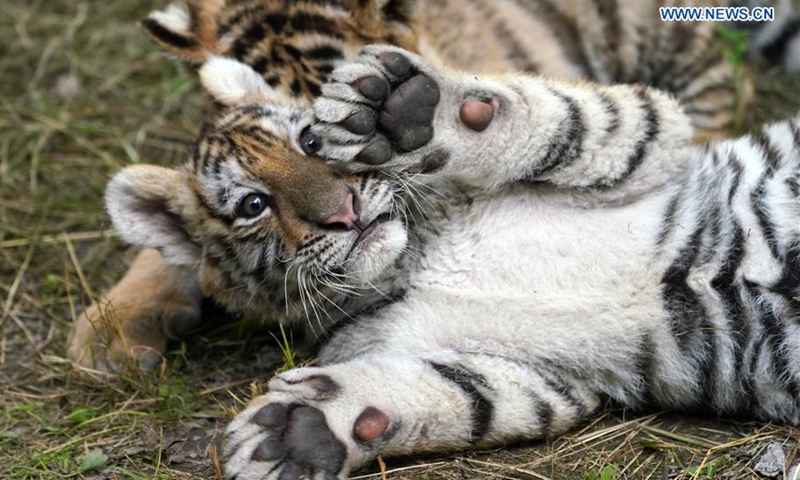World tiger population grows while Southeast Asia threats ‘critical’: WWF
Tiger populations in five countries are making a comeback but the endangered species still faces major threats such as poaching, conservation group WWF and the Indian government said.

"From an historic population low in 2010, tigers are finally making a remarkable comeback in much of South Asia, Russia and China," WWF Tigers Alive Initiative head Stuart Chapman said in a statement to mark World Tiger Day on Wednesday.
Chapman said population increases in Bhutan, China, India, Nepal and Russia were "great news" for other threatened species in their habitat, as well as for millions of people dependent on such ecosystems.
But tigers were still under threat from poaching and habitat destruction, while the wild animal populations had fragmented, which increases the risk of inbreeding, the WWF said.
"This has reached critical levels in much of Southeast Asia, where a snaring crisis is decimating wildlife, including tigers and their prey," the group said.
In a report released earlier in July, the WWF found that there were more than 12 million snares threatening wildlife in the protected areas in Cambodia, Laos and Vietnam.
India released its status report on tigers Tuesday, which detailed the steps taken to conserve the big cats.
The report warned that although the population had grown, many of India's tiger reserves and protected areas were within larger regions used for "ecologically unsustainable" purposes such as mining.
"Many tiger populations are confined within small protected areas and some have habitat corridors that permit tiger movement between them," the report added. But many of the corridor habitats were not protected areas and also at risk due to human activity and development, it said.
The census, carried out in 2018-19 at more than 28,000 locations, was also included in the Guinness World Records earlier in July for being the largest-ever camera-trap wildlife survey.

Two newborn Siberian tiger cubs frolic at Hengdaohezi Siberian Tiger Park in Hailin, northeast China's Heilongjiang Province on Tuesday.Photo: Xinhua
India, home to 70 percent of the big cat's global population, is among 13 countries that pledged a decade ago to boost feline numbers."From an historic population low in 2010, tigers are finally making a remarkable comeback in much of South Asia, Russia and China," WWF Tigers Alive Initiative head Stuart Chapman said in a statement to mark World Tiger Day on Wednesday.
Chapman said population increases in Bhutan, China, India, Nepal and Russia were "great news" for other threatened species in their habitat, as well as for millions of people dependent on such ecosystems.
But tigers were still under threat from poaching and habitat destruction, while the wild animal populations had fragmented, which increases the risk of inbreeding, the WWF said.
"This has reached critical levels in much of Southeast Asia, where a snaring crisis is decimating wildlife, including tigers and their prey," the group said.
In a report released earlier in July, the WWF found that there were more than 12 million snares threatening wildlife in the protected areas in Cambodia, Laos and Vietnam.
India released its status report on tigers Tuesday, which detailed the steps taken to conserve the big cats.
The report warned that although the population had grown, many of India's tiger reserves and protected areas were within larger regions used for "ecologically unsustainable" purposes such as mining.
"Many tiger populations are confined within small protected areas and some have habitat corridors that permit tiger movement between them," the report added. But many of the corridor habitats were not protected areas and also at risk due to human activity and development, it said.
The census, carried out in 2018-19 at more than 28,000 locations, was also included in the Guinness World Records earlier in July for being the largest-ever camera-trap wildlife survey.
